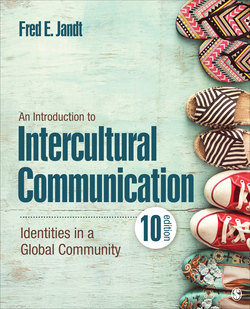Читать книгу An Introduction to Intercultural Communication - Fred E. Jandt - Страница 142
На сайте Литреса книга снята с продажи.
Summary
ОглавлениеSensation is the neurological process of becoming aware of our environment and is affected by our cultures. Perception is usually thought of as having three steps—selection, organization, and interpretation—each affected by culture. Perception and thought are not independent of the cultural environment; therefore, our brains both are shaped by the external world and shape our perception of the external world. The Greek idea of a strong individual identity and the Chinese idea of harmony affected both the sensation and perception process in each culture.
The concept of high-context and low-context cultures was popularized by Edward T. Hall (1976). Individuals in high- and low-context cultures perceive the world differently. Cultures in which little of the meaning is determined by the context because the message is encoded in the explicit code are labeled low context. Cultures in which less has to be said or written because more of the meaning is in the physical environment or already shared by people are labeled high context. High context and low context, respectively, are closely associated with collectivism and individualism. In high-context cultures, people tend to view themselves as part of a community and value harmony. In low-context cultures, individual goals and autonomy are stressed. Low-context cultures, such as the United States, with a greater concern for privacy and autonomy, tend to use direct-face negotiation and express more self-face maintenance, whereas high-context cultures, such as China, with a greater concern for interdependence and inclusion, tend to use indirect-face negotiation and express more mutual-face or other-face maintenance.
Finally, this chapter compares high-context China, a country of 1.38 billion people and the world’s second-largest economy, with the low-context United States, first over the issue of territorial sovereignty concerning Taiwan, Tibet, the South China Sea, and airspace. Then the chapter compares the two countries over the issues of human rights and free speech and of broadcast media and the Internet.
